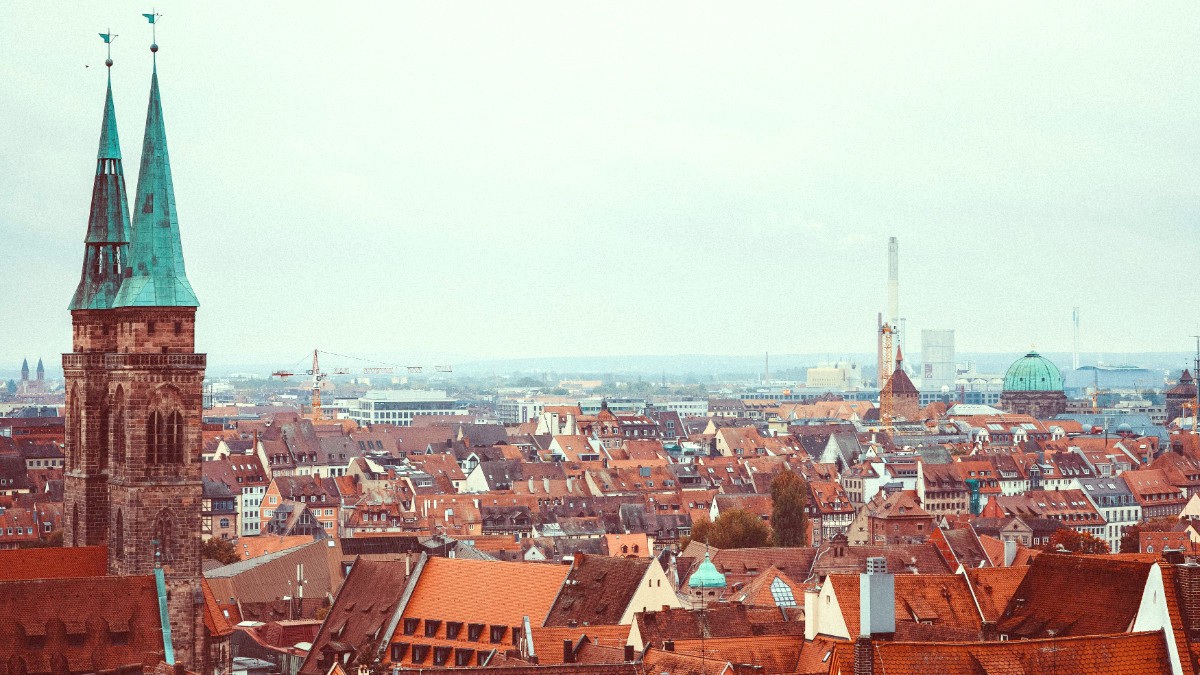
Bavaria, Germany
Stepping into Nuremberg feels like walking through different eras. The city’s medieval core, largely rebuilt after World War II, showcases a commitment to preserving its heritage. You see impressive stone walls, charming half-timbered houses, and grand churches. Beyond the visual appeal, Nuremberg holds deep historical significance, both as a center of the Holy Roman Empire and, more solemnly, during the Nazi regime. The city has openly confronted its past, with sites that promote reflection and learning.
Nuremberg exceeds its history. It flourishes as a modern German city with a strong economy, a lively cultural scene, and friendly people. You can enjoy traditional Franconian food, explore contemporary art, or relax in a local beer garden. The city is simple to navigate, with an efficient public transport system connecting all its areas.
This combination of past and present shapes a travel experience both educational and enjoyable. Nuremberg greets you to uncover its many facets.
Nuremberg is in the state of Bavaria, in the southern part of Germany. It sits within the administrative region of Middle Franconia, a distinct cultural area within Bavaria. The city lies on the Pegnitz River, which winds through its historic center, enhancing its picturesque setting. This geographical position historically made Nuremberg an important trade and transport hub in Europe.
The city's location in Franconia gives it an unique character, separate from Upper Bavaria where Munich is situated. Franconia has its own traditions, dialect variations, and culinary specialties. Nuremberg serves as the unofficial capital of Franconia, its economic and cultural heart. The surrounding landscape features rolling hills, forests, and charming smaller towns, with opportunities for outdoor activities and day trips.
Summers are pleasantly warm. Winters are cold and often snowy. This seasonal variation influences activities throughout the year.
The city is well-connected by rail and air to other major European cities, a practical starting point for broader European tours.
The river flows through the city's Old Town, dividing it into St. Sebald and St. Lorenz. It enhances the cityscape.
The canal passes close to Nuremberg, underlining its historical significance as a waterway junction and trading center.
Public transport ease means visitors explore various neighborhoods and different facets of Nuremberg life.
The city is a gateway to the wider Franconian region, recognized for its unique culture, distinct dialect, and numerous small breweries. Nuremberg serves as an excellent base for day trips to other UNESCO World Heritage sites nearby.
The Pegnitz River flows through the city from east to west. It separates the Old Town into two halves: St. Sebald on the north bank and St. Lorenz on the south. The Main-Danube Canal, linking the Main River (and thus the Rhine) with the Danube, passes near Nuremberg. This network of rivers and canals allowed Nuremberg to flourish as a trading center for centuries.
The city's urban area extends beyond the historic core, encompassing green spaces and residential districts. Its easy accessibility by public transport means visitors explore various neighborhoods. This makes it possible to experience different facets of Nuremberg's life, from the bustling city center to quieter residential areas. The geographical setting features both a beautiful backdrop and a strategic advantage for travel throughout Germany and beyond.
Your journey here begins with a sense of anticipation for what this diverse city will reveal.
Nuremberg's history spans over a thousand years. It holds immense significance for German and European development. The city rose to prominence during the Middle Ages, becoming one of the most powerful and important imperial cities of the Holy Roman Empire. Emperors often resided in Nuremberg Castle, and imperial diets were frequently held here.
This period saw a flourishing of arts, crafts, and trade, establishing Nuremberg as a center of medieval prosperity and innovation. Master artists like Albrecht Dürer and sculptors like Veit Stoss left their mark during this golden age. Their works remain a testament to the city's artistic legacy.
The city's strategic location along trade routes contributed to its wealth and influence. It became a hub for metalworking, clockmaking, and intricate toy production. Imposing city walls, many sections still standing, protected this thriving commercial and cultural hub.
Nuremberg's history took a darker turn in the 20th century. During the Nazi regime, the city was the site for massive Nazi Party Rallies. Nazis chose Nuremberg for its strong historical ties to the Holy Roman Empire, aiming to legitimize their ideology. This led to the construction of vast, monumental structures for propaganda. The city became a symbol of Nazi power and ideology.
After World War II, Nuremberg bore heavy scars from intense bombing. Much of the city lay in ruins. Despite the devastation, a determined rebuilding effort began, aiming to restore the city's medieval character. This reconstruction preserved the city's layout and ambiance.
The city gained global recognition as the site of the Nuremberg Trials after the war. The Palace of Justice hosted the International Military Tribunal, where Nazi war criminals faced justice. This historic event solidified Nuremberg's role in confronting its past and promoting human rights and international law.
The Nuremberg Castle dominates the city skyline, with panoramic views and a tangible link to medieval emperors.
The Old Town charms with its cobblestone streets, half-timbered houses, and impressive Gothic churches like St. Lorenz and St. Sebald.
The Main Market Square bustles with a daily produce market and becomes the world-renowned Christkindlesmarkt during Advent.
Public transportation is efficient, connecting the airport, train station, and all major city areas seamlessly.
Visitors find a range of accommodation options, from budget hostels to luxury hotels, catering to different travel styles.
Day trips to nearby UNESCO World Heritage sites like Bamberg and Regensburg are simple, making Nuremberg an excellent base for exploring the wider Franconian region.